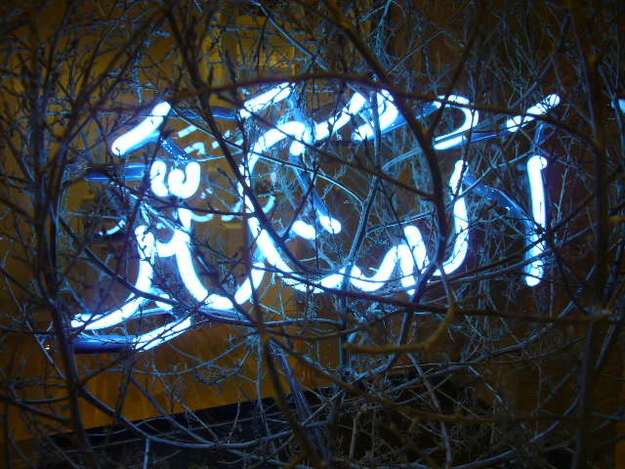Shezad Dawood’s Until the End of the World is an exploration of the beginnings and endings of cosmological truths and universal systems. Working from the final sections of the Qu’ran, Dawood presents an interdisciplinary installation comprised of paintings, neon lights and tumble weeds, which call into question the convergence of design, formalism and mysticism.
Event:
Until the End of the World
Shezad Dawood exhibition

Until the End of the World is a space where Dawood investigates the fundamentals of Islam with a mix of the avant-garde. In his piece titled ‘The day when the quaking one will quake,’ is a verse from the 97th Surah of the Qu’ran, composed of a bright neon light which is reflected in mirrored glass panels. This examines the possibilities of the end of the world with questions of rebirth and notions of absolute truth.
Dawood’s tumbleweeds are suggestive of the American Wild West era of the 1860s and 1870s and the ideology and belief system inherent in that era. Created into a series of work entitled ‘The 99 Names of God,’ the tumble weeds signify both the emptiness and vastness of the desert as key notions in Wild West mythology and Islamic cultures. The new frontier becomes a site of a new apocalypse, where the end of the world becomes simply, the birth of a new one.
Dawood also presents material collected from the Bianchini Ferier textile collection – a house that began in the 1880’s using boldly stylised designs which experienced an explosion of popularity in the early 1900’s. These quintessentially formalist designs are used as a principal reference point in Dawood’s search for parallels and moments of interweaving between the two cultural mythologies of European modernist art and Islamic design. Through these works, Dawood suggests that what has become known as two opposing approaches to the notion of modernity exist in far more complex dynamics than often depicted.
Dawood engages us in a complex revisiting of historically documented artistic practices, and with a simple tweak in perspective, opens a vast area of convergence, interweaving and overlapping between two monolithic belief systems.